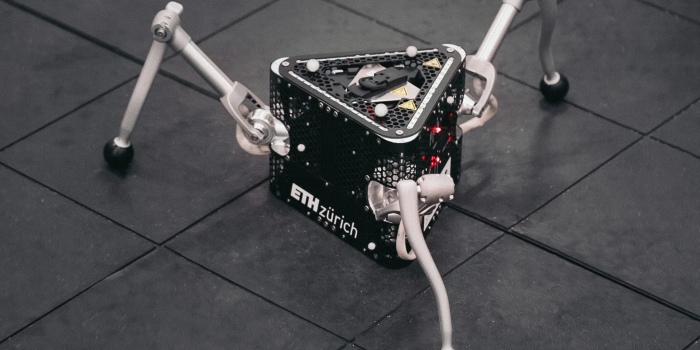In a far-off future, robots will traverse the harsh terrain of asteroids in search of mineral riches and to solve the secrets of the universe. The SpaceHopper is a ground-breaking three-legged robot recently tested in an airplane operating in zero gravity, bringing the idea closer to reality.
The SpaceHopper is a research project that started as a student project at the University of ETH Zurich and was driven by the imperative to navigate the challenges posed by asteroids and moons efficiently. These celestial bodies provide significant information about the universe’s earliest days and contain precious resources like rare-earth metals.

Made of aircraft-grade aluminum, the SpaceHopper has a triangular body with movable legs that are motor-driven at the knee and hip joints. Since the robot has no front or back end, it is omnidirectional and can easily travel in any direction.
The SpaceHopper’s inbuilt deep-learning software, which coordinates its legs’ movement in harmony, is essential to its capabilities. Thanks to its software, the robot can perform a variety of tasks, such as initiating hops, keeping its balance while flying, and making exact landings at predefined locations.
All nine leg motors work together to launch the SpaceHopper into the air, and deliberate leg retractions and extensions modify the spacecraft’s center of mass to maintain stability in midair. The robot’s movable legs absorb impact during descent, preventing tipping over and promoting a secure landing.

The initial tests of SpaceHopper’s capabilities were carried out in the safe setting of an ETH Zurich laboratory, modeling the low-gravity conditions of planets such as the dwarf planet Ceres. However, a considerable milestone was accomplished when the robot took out on an Air Zero G parabolic flight with Novespace and the European Space Agency.
The project succeeded when the SpaceHopper proved its worth during the 2023 parabolic flight by doing many leaps and staying stable in weightless settings. Specifically, the SpaceHopper’s streamlined three-legged design seeks to minimize weight and mass, which may allow deployment from small unmanned spacecraft such as CubeSats.
Sources: ETH Zurich, SpaceHopper


